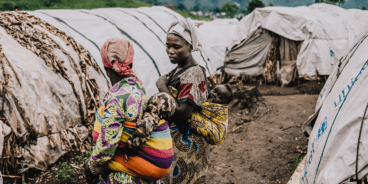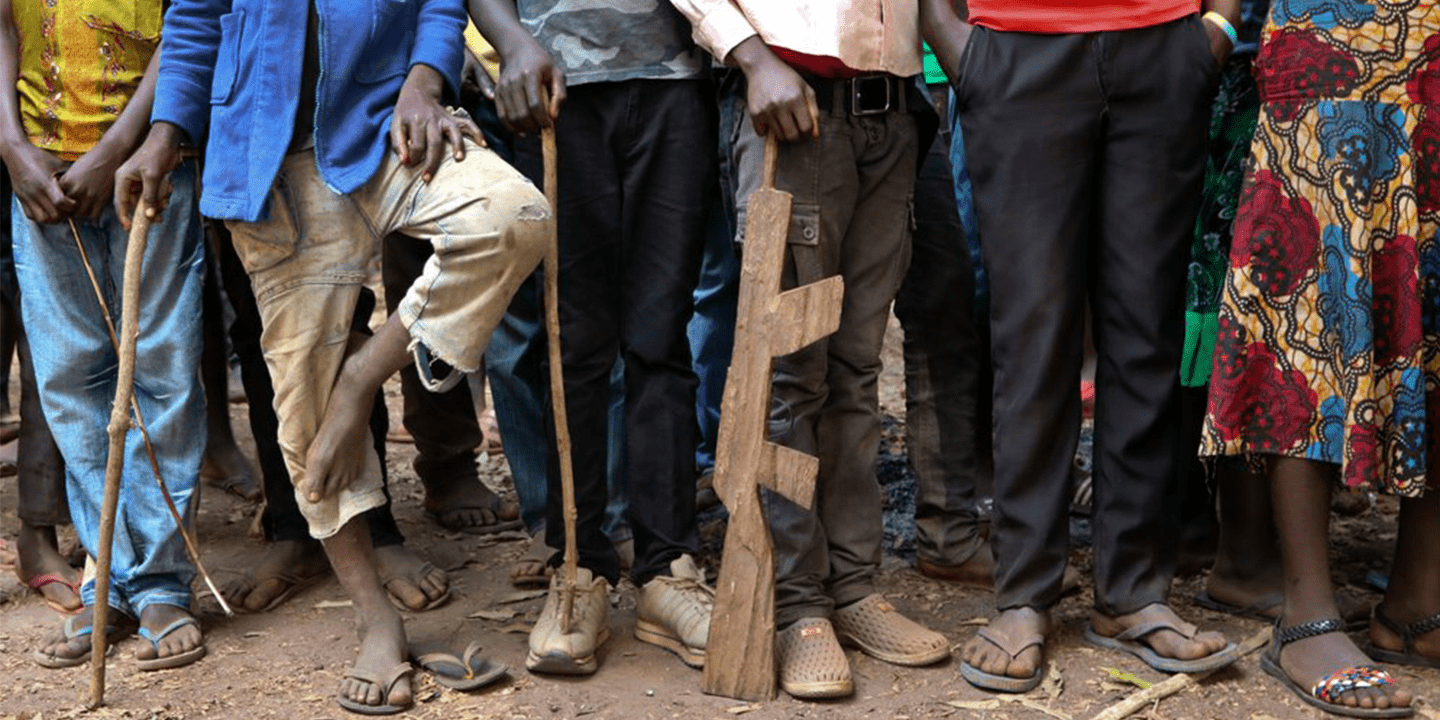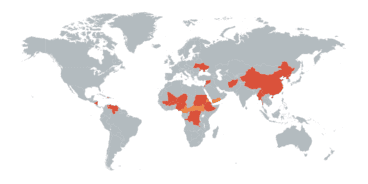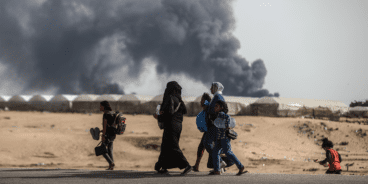

The Art of the Deal, the AK-47 and the Arms Trade Treaty
This article was originally published on 5 July 2017 in Huffington Post.
When we think of the Holocaust our mind slips inexorably to dismal images of cattle cars stuffed with people, or to gas chambers, crematoria and the cruel irony of the “Arbeit Macht Frei” gate. But of the six million Jews killed during the Holocaust over a million were shot with rifles and other small arms. They were not killed in concentration camps, but were murdered in fields or forests and pitched into mass graves outside villages in Nazi-occupied Eastern Europe. Before Auschwitz, Sobibor or Treblinka, the Holocaust began with bullets.
The same is true of most mass atrocities carried out since 1945. From the killing fields of Cambodia to the burnt villages of Darfur, most of the killing was done with rifles and other small arms. It is for this reason that there is an enduring connection between preventing atrocities and confronting the international arms trade.
The AK-47, or Kalashnikov, is the most popular weapon in the world today, with an estimated 70 million currently in existence. Numerous countries manufacture local variants of the ubiquitous assault rifle and while a new Chinese-made AK-47 might cost you $500, you can easily purchase one in many former conflict zones for as cheap as $50. When I lived in Johannesburg during the mid-1990s, leftover AK-47s from the civil war in Mozambique were still making their way through the townships and some entrepreneurial gangs were even renting out their AK-47s to other aspiring criminals at an hourly rate.
The AK-47’s enduring popularity stems, in part, from the fact that it doesn’t require much cleaning, rarely jams and is simple to operate. Fully loaded, the AK-47 weighs less than five kilograms (11 lbs). This means that despite its lethality, the assault rifle can be easily used by a child soldier.
During the 1960s and 70s the AK-47 was the weapon of choice for freedom fighters. Following a bitter anti-colonial war, in 1975 the new government of Mozambique emblazoned an AK-47 on their national flag. I listened to my fellow anti-apartheid activists sing about AK-47s in South Africa during the 1990s. And while AK-47s undoubtedly helped many nations achieve liberation from colonialism, these days it is more often a weapon of mass destruction, especially in Africa.
In the civil wars in Somalia, Liberia and Sierra Leone the AK-47 was omnipresent. It has also been highly visible in recent armed conflicts in the Central African Republic, Mali, Sudan and South Sudan. In the Democratic Republic of the Congo, the UN has reported that at least ten variants of the AK-47 were circulating amongst the various armed groups who were killing civilians.
The annual global trade in small arms and light weapons, including AK-47s, is now worth more than $8.5 billion a year, involving more than a thousand companies. An estimated 12 billion bullets are also manufactured each year, enough to shoot every person on this planet. In total the legal global arms trade, from AK-47s to tanks and fighter jets, is now worth an estimated $100 billion annually.
According to the respected Stockholm International Peace Research Institute (SIPRI), between 2012 and 2016 the five biggest arms exporters in the world were the United States (33% of all exports), Russia (23%), China (6.2%), France (6%) and Germany (5.6%). More than a quarter of these armaments were shipped to the Middle East. The fact that the four top arms exporters are also permanent members of the UN Security Council, a body mandated to maintain international peace and security, is unconscionable.
Syria, in particular, has been a source of bitter division at the UN Security Council. Despite six years of civil war and half a million dead, no arms embargo has been imposed. According to SIPRI, Russia was the source of 78% of the Syrian government’s weapons at the start of the conflict. This means that since 2011 President Bashar al-Assad’s government has been waging war and committing atrocities with Russian-made bullets, rockets, tanks, artillery and attack helicopters. Many of these came to Syria via Rosoboronexport, Russia’s main international arms exporter. A multitude of other governments have also been funnelling weapons to President Assad’s enemies as the civil war, and the arms trade that sustains it, shows no signs of abating.
The growing threat posed by violent extremist groups also highlights how fragile states and permeable borders enable the illicit trade in arms. When the so-called Islamic State (ISIS or Daesh) seized Mosul in June 2014, for example, they became the direct beneficiaries of decades of irresponsible arms flows into Iraq. Daesh’s atrocities in Mosul and elsewhere have been committed mainly with weapons looted from Iraqi government military stocks and provided by more than two dozen countries.
It is for all these reasons that the UN General Assembly negotiated and adopted the historic Arms Trade Treaty (ATT) during 2013. The ATT was the result of a long campaign by both states and civil society to constrain the arms trade in order to prevent weapons from falling into the hands of terrorists, transnational criminals and governments who may use them to commit mass atrocities. Amnesty International, who helped lead the campaign, pointed out that it was absurd that the global trade in bananas was more rigorously regulated than the trade in AK-47s. Since the ATT entered into force in December 2014, at least 130 states have become signatories and 89 have ratified the Treaty.
The United States, the world’s largest arms exporter, signed the ATT in 2013 but is highly unlikely to ratify it. Indeed, under President Donald Trump it is improbable that the ATT will ever make it out of former Secretary of State John Kerry’s old filing cabinet. Instead President Trump has enthusiastically promoted a $110 billion arms deal with Saudi Arabia – a puritanical theocracy that still arrests women for driving – with his official spokesperson celebrating the projected weapons transfer as “the single largest arms deal in US history.”
President Trump’s jubilation is all the more disturbing when one considers that since March 2015 Yemen has faced relentless bombing by a Saudi-led military coalition as well as ongoing attacks by Houthi rebels. Thousands of civilians have been killed as both sides have targeted civilian infrastructure, including schools and hospitals, and directly contributed to what the UN now regards as one of the greatest humanitarian catastrophes in the world.
Saudi Arabia has faced harsh international criticism for numerous airstrikes in Yemen that appear to have directly violated international law. For example, Saudi Arabia has used cluster munitions, which are banned in more than 115 countries, in densely populated urban areas in Yemen, recklessly increasing the threat of mass civilian casualties.
All governments and companies who sell weapons to perpetrators of mass atrocities are morally culpable for the results. Whether the United States chooses to ratify the ATT or not, it is unlikely that the people of Yemen will soon forget that in their moment of despair the US government was excitedly tallying up sales receipts for more fighter jets and missiles. President Trump may well find that the art of dealing in weapons, death and war crimes will come back to haunt him.
Related Publications


